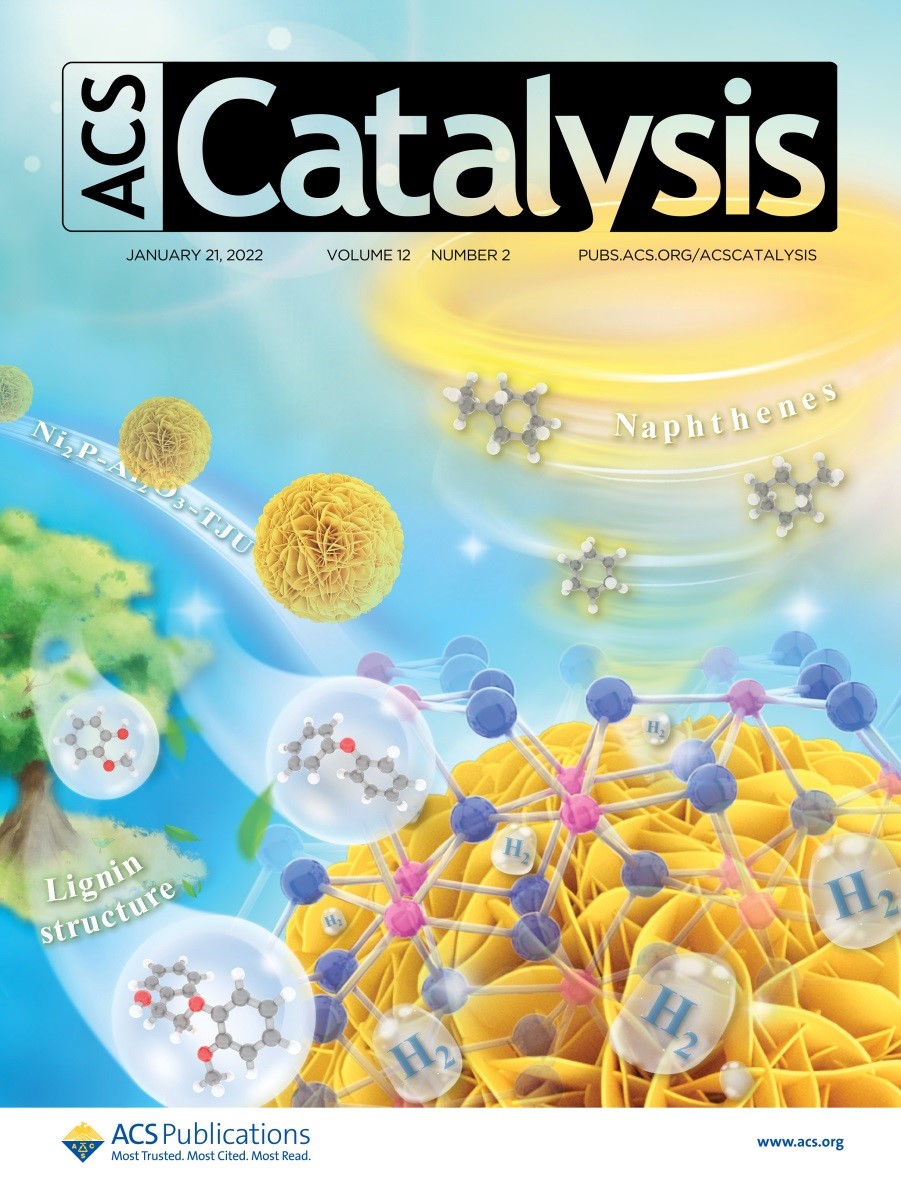Lignocellulose is a major source of bioenergy. The use of bio-based fuels and materials can reduce pollution emissions and contribute to economic improvements. Lignocellulose is available in large amounts in agricultural residues as well as in pulp/paper, sugar and bioethanol production facilities. Lignin, an important component of lignocellulosic biomass, accounts for 15-35% by weight (40% by energy). It is the second most heterogeneous natural organic biopolymer with a production potential of more than 300 billion tons/year. Commercial applications of lignin obtained from biomass are relatively rare. Currently, researchers are working globally to increase its additional value. Catalysts with high hydrodeoxygenation performance are necessary for the efficient conversion of lignin to naphthenic hydrocarbons, among which, the noble metal catalysts are unable to be widely applied for their high prices. Ni-based catalysts with strong hydrogenation and low deoxygenation capacity produce large amounts of alcohol in the conversion of lignin. Ni2P catalysts have good hydrodeoxygenation ability, due to the change in the electronic environment around Ni. Therefore, it is an important topic to develop an efficient nickel phosphide catalyst for the conversion of lignin to cycloalkanes.

Recently, Professor Na Ji‘s group, School of Environmental Science and Engineering, Tianjin University, has developed a novel strategy for the synthesis of hydrotalcite-based nickel phosphide catalyst (Ni2P-Al2O3). High loading Ni does not lead to agglomeration, realizing the characteristics of both high loading and high dispersion of catalyst, due to the anchoring effect of hydrotalcite. The in-situ reduction of red phosphorus at 500°C enables Ni2P catalysts with small particle size, abundant active and acidic sites which facilitate the activation of substrates and H2. Among the two different types of Ni sites of Ni(1) & Ni(2) in Ni2P, DFT calculations showed that the Ni(2) site, highly exposed on Ni2P-Al2O3 surface, possesses a stronger ability to break C-OH bonds during the hydrodeoxygenation of guaiacol in comparison with the Ni(1) site. In the hydrodeoxygenation of guaiacol, 100% conversion and 94.5% yield of cyclohexane were obtained over the Ni2P-Al2O3 catalyst under 5 MPa H2 at 250℃for 3 hours. Other lignin-derived phenolic compounds could also afford the corresponding alkanes with the yields higher than 85%. Moreover, Ni2P-Al2O3 exhibited high hydrodeoxygenation activity in the deconstruction of more complex wood structures, including lignin oil and real lignin. The relevant work “Highly selective hydrodeoxygenation of lignin to Naphthenes over three-dimensional flower-like Ni2P derived from hydrotalcite” has been published as a cover article in the internationally renowned journal ACS Catalysis (IF-13.084)(https://pubs.acs.org/toc/accacs/12/2?ref=pdf).

Prof. Na Ji’s group has been working on the development of new catalyst materials for the efficient conversion of biomass and the green & efficient transformation process, with important theoretical research value and broad application prospects, aiming to provide a new green transformation pathway for the conversion and utilization of biomass renewable resources. Recently, they have published more than 80 SCI papers with H-Index of 28 in international journals such as Angew. Chem. Int. Ed., ACS Catalysis, Applied Catalysis B: Environmental, ChemSusChem, Green Chemistry, Journal of Catalysis, Journal of Energy Chemistry, Renewable & Sustainable Energy Reviews, ACS Sustainable Chemistry & Engineering etc.
By: School of Environmental Science and Engineering
Editor: Qin Mian






